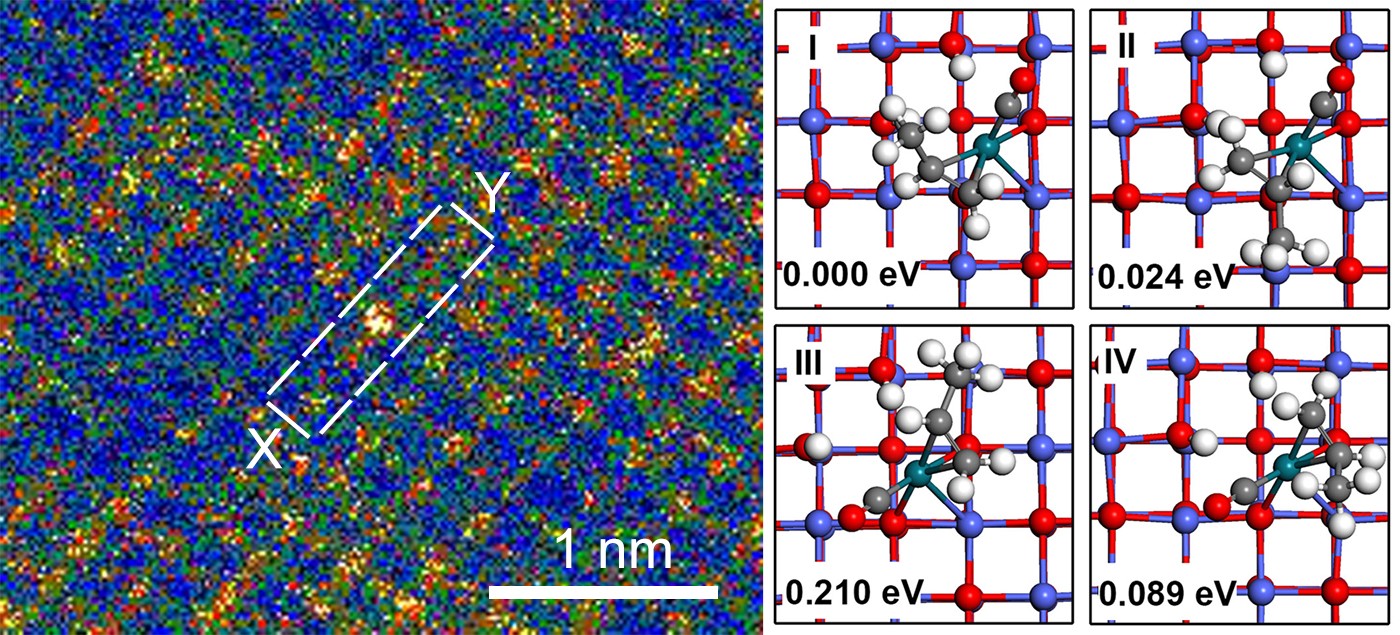- Laboratory dynamics
- notice
Laboratory dynamics
Recently,
the research group of Prof. Zeng has made great progress in engineering the isomerization during the transformation of C3 to C4 molecules
based on Rh/CoO single-atom catalysts. Researchers successfully constructed
CoO-supported Rh single-atom catalysts and evaluated their catalytic properties
in the transformation of C3 to C4 molecules. Further
mechanistic studies revealed that a structural reconstruction of Rh single
atoms in Rh/CoO occurred during the catalytic process,
facilitating the adsorption and activation of reactants. This work has been
published on Nature Communications with the title of “Atomic-level Insights in
Optimizing Reaction Paths for Hydroformylation Reaction over Rh/CoO Single-atom
Catalyst” [Nature Commun. 2016, 7, 14036]. Doctor Liangbing and Master Wenbo
Zhang Wang contributed equally.

Rh/CoO single-atom catalysts and their catalytic
mechanism
In
the current energy fields, liquid fuels mainly came from the petroleum cracking.
With regard to the gradual depletion of oil resources and the ever-increasing
demand for new energy resources all over the world, Fischer-Tropsch synthesis
represents one of the most potential approach to solve the shortage of
petroleum resources. In Fischer-Tropsch synthesis, isomerization occurs during
the propagation from small carbon-based molecules to long-chain molecules. It
is well established that octane value serves a pivotal descriptor for the
quality of petroleum. The isomerization of low molecular olefins/alkanes can
not only increase the octane value for high quality petroleum, but also yield
value-added products such as butyraldehyde to improve the economic efficiency. Accordingly,
great attention has been focused on searching for low-cost, remarkable activity
and high selectivity catalysts towards the isomerization during the propagation
of carbon-carbon chains.
The
isomerization in the propagation of carbon-carbon chain starts from the
transformation from C4 to C4 molecules. Herein, we demonstrated
the isomerization during the transformation of C3 to C4 molecules based on CoO-supported Rh single-atom catalysts. Rh/CoO single-atom
catalysts exhibited remarkable catalytic activity and high selectivity for the
linear products towards the chain propagation. By increasing Rh mass loadings,
isolated Rh atoms switched to aggregated nanoclusters with different atomicity.
Among the obtained Rh-based catalysts, Rh/CoO achieved the highest turnover
frequency number of 2065 h−1 with the selectivity as high as 94.4% for linear products, butyraldehyde. According
to mechanistic studies, the chemical field originating from the interaction
between CO and the catalyst surface induced the structural reconstruction of Rh
single atoms on CoO nanosheets. This field also coupled with that deriving from
the reactants and intermediates. As such, the linear products, butyraldehyde,
were kinetically favored, thus influencing the isomerization during the
transformation of C3 to C4 molecules.
This
work was supported by CAS, MOST of China, and the National Natural Science
Foundation of China.
http://www.nature.com/articles/ncomms14036?WT.feed_name=subjects_physical-sciences.

